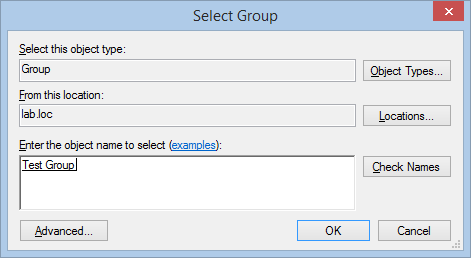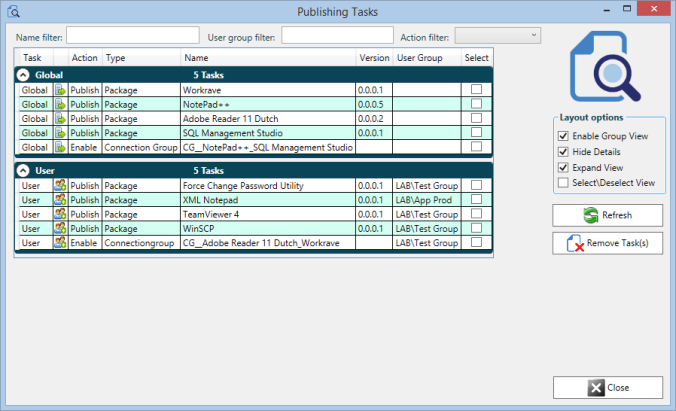Introduction
It’s exactly a year ago that App-V Scheduler 2.0 was released in its current form and today we are very excited to announce the latest release of App-V Scheduler, version 2.3.
If you are reading about App-V Scheduler for the first time: App-V Scheduler is a purpose build App-V 5 deployment tool specially designed for virtual workloads like RDS\XenApp and VDI environments. The power of App-V Scheduler is the amount of fine grained control, instant package delivery and real-time visibility over your App-V 5 deployment. To name some advantages of App-V Scheduler :
- Support for both persistent and non-persistent environments (Citrix PVS\MCS integration)
- Advanced cache management (Cleanup, auto balance cache with source and selectively pre-cache packages)
- Improve application launch time with virtual registry pre-staging and application pre-launch feature
- Packages and Connection groups available at machine startup and ongoing through deploy cycle
- Complete application life cycle management; from instantly deploying packages to draining and retire applications without touching your image
- Real-Time (portable) remote management console (inventory, manage and central configuration)
- No App-V full infra components needed (dramatically simplify your deployment)
In this blog post we will walk through the most important new features in App-V Scheduler 2.3, to read more about existing features click here.
What’s new in the App-V Scheduler agent
Let’s start with the new managed publishing mode which can be configured in the App-V Scheduler agent configuration window :

When managed mode is enabled you can use App-V Scheduler Central View to create publishing tasks (see screenshots later on in this post). Both global and user publishing tasks are supported. Global publishing tasks are executed when the deploy cycle runs and user publishing tasks are executed when a user logs in to the machine, this is done directly by the App-V Scheduler agent service so no need to execute anything in the user context. Optionally user publishing tasks can also be refreshed when the deploy cycle runs allowing you to publish new applications while users are logged on to the machine. Multi domain environments are supported and there is also an option to enable nested group support.
In unmanaged mode, App-V Scheduler will publish all packages globally by default so you can use User Environment Management (UEM) tools for example to control access to the applications.
A new feature called pre-stage virtual registry is now added to the deploy cycle :

This option can invoke the staging of the virtual registry right after the package is added, normally this is done when the application is launched by the user for the first time causing launch delays and unnecessary CPU utilization. App-V Scheduler already logs the amount of time it took to add and publish a package and this is now also done for the registry pre-stage feature:

What’s new in App-V Scheduler Central View
Packages and connection groups are now displayed in the same overview making it easier to navigate and manage them. The per machine options are now all displayed in the group view :

The Central View console is now multi-threaded, this means if you inventory multiple machines at the same time or remove packages on multiple machines at the same time this will go much quicker. All tasks and their status is shown in the background tasks window :

The package options window is now extended with the new publishing task options (used when App-V Scheduler agent is running in managed mode). You can create new or show existing publishing tasks of the selected package directly from here :

When you create a new publishing task you can select the publishing type :

User groups can easily be selected with the active directory object picker :

You can also show and manage all publishing tasks at once when clicking on the Show Publishing Tasks button in the Central View main window :

The create new connection group option is extended with the latest App-V 5 SP3 enhancements like the any version wildcard and possibility to set a package as optional :

Availability
App-V Scheduler 2.3 is now available on the App-V Scheduler website.
Thanks for reading! If you have any questions do not hesitate to contact us.










